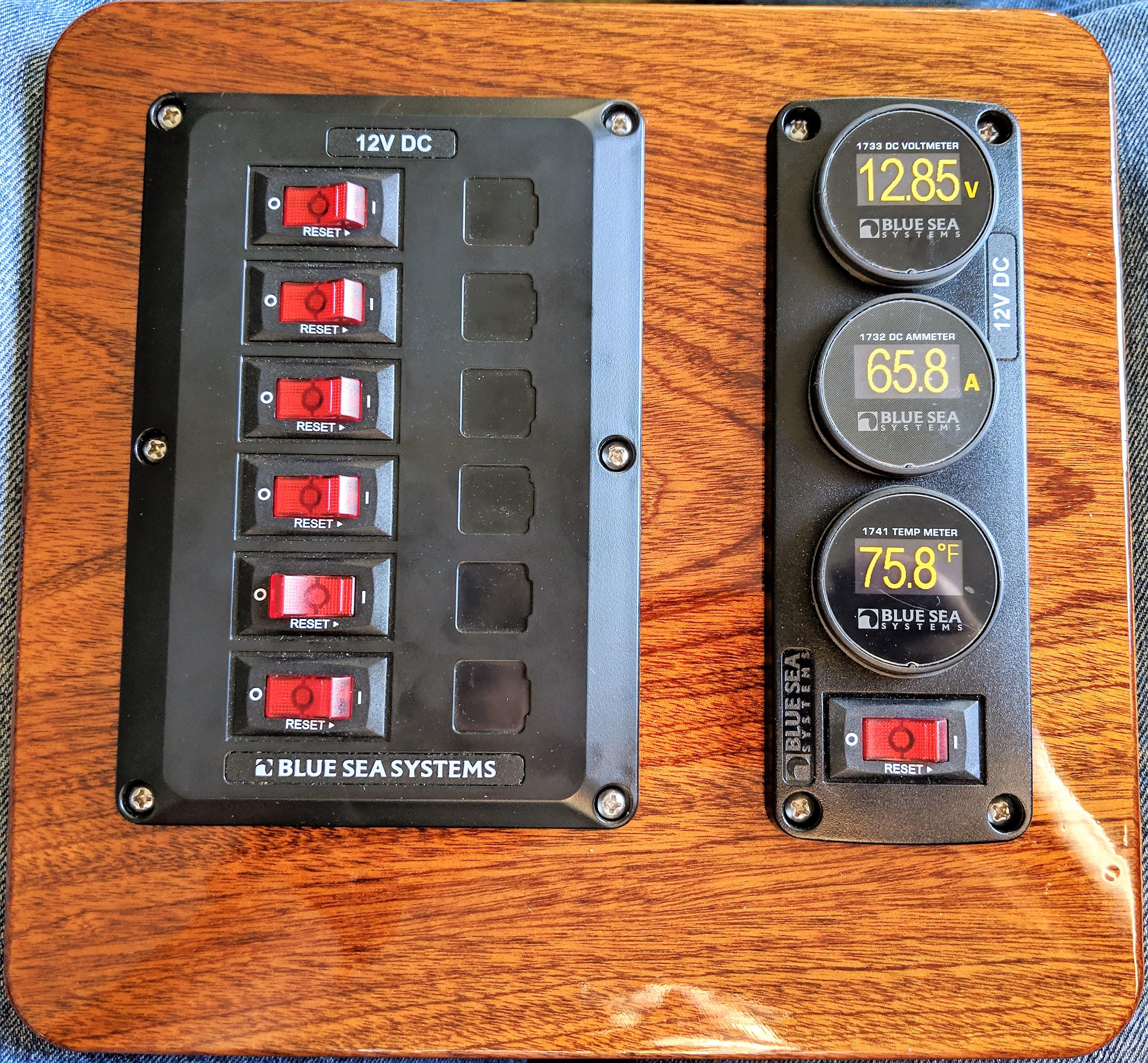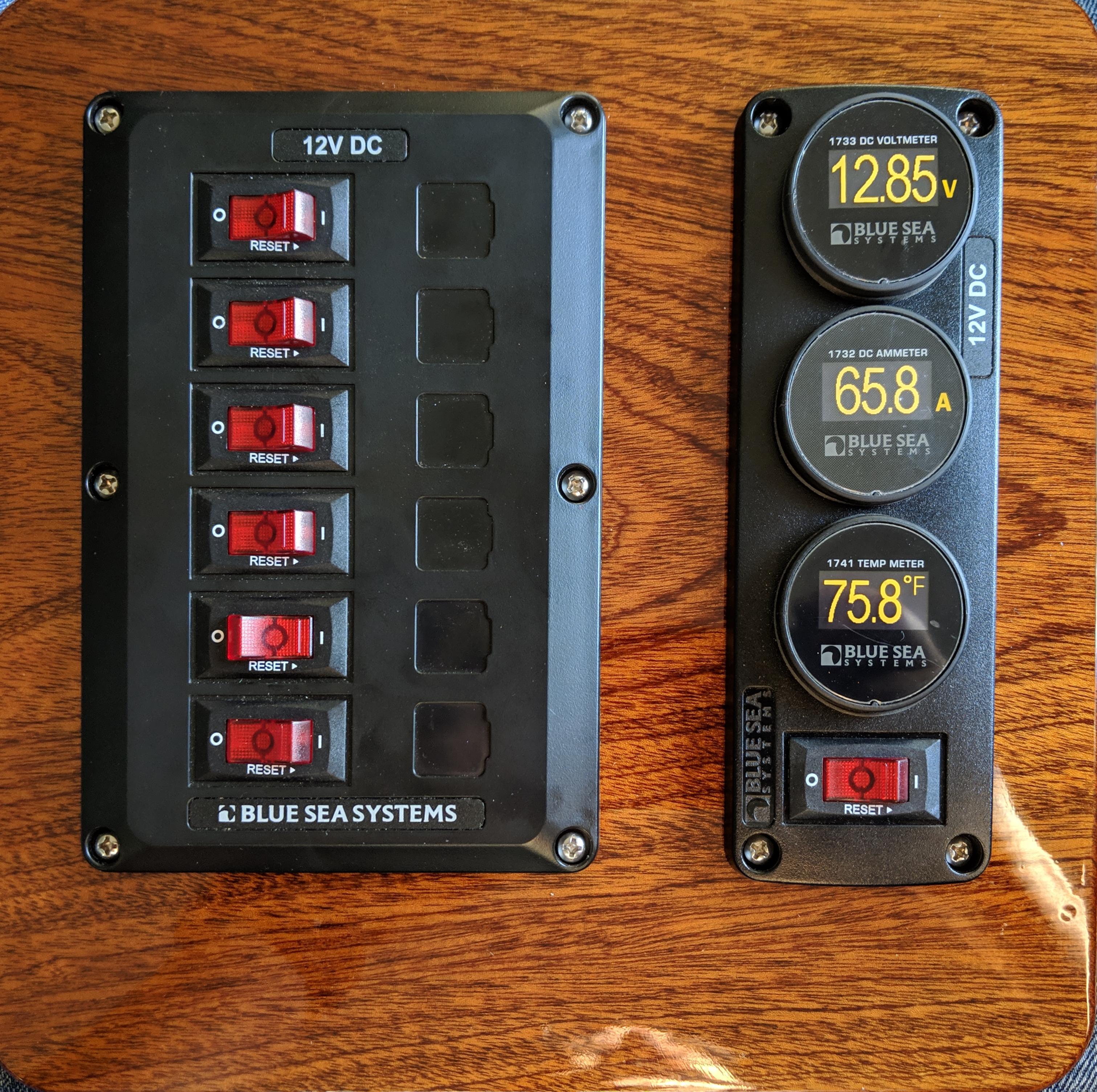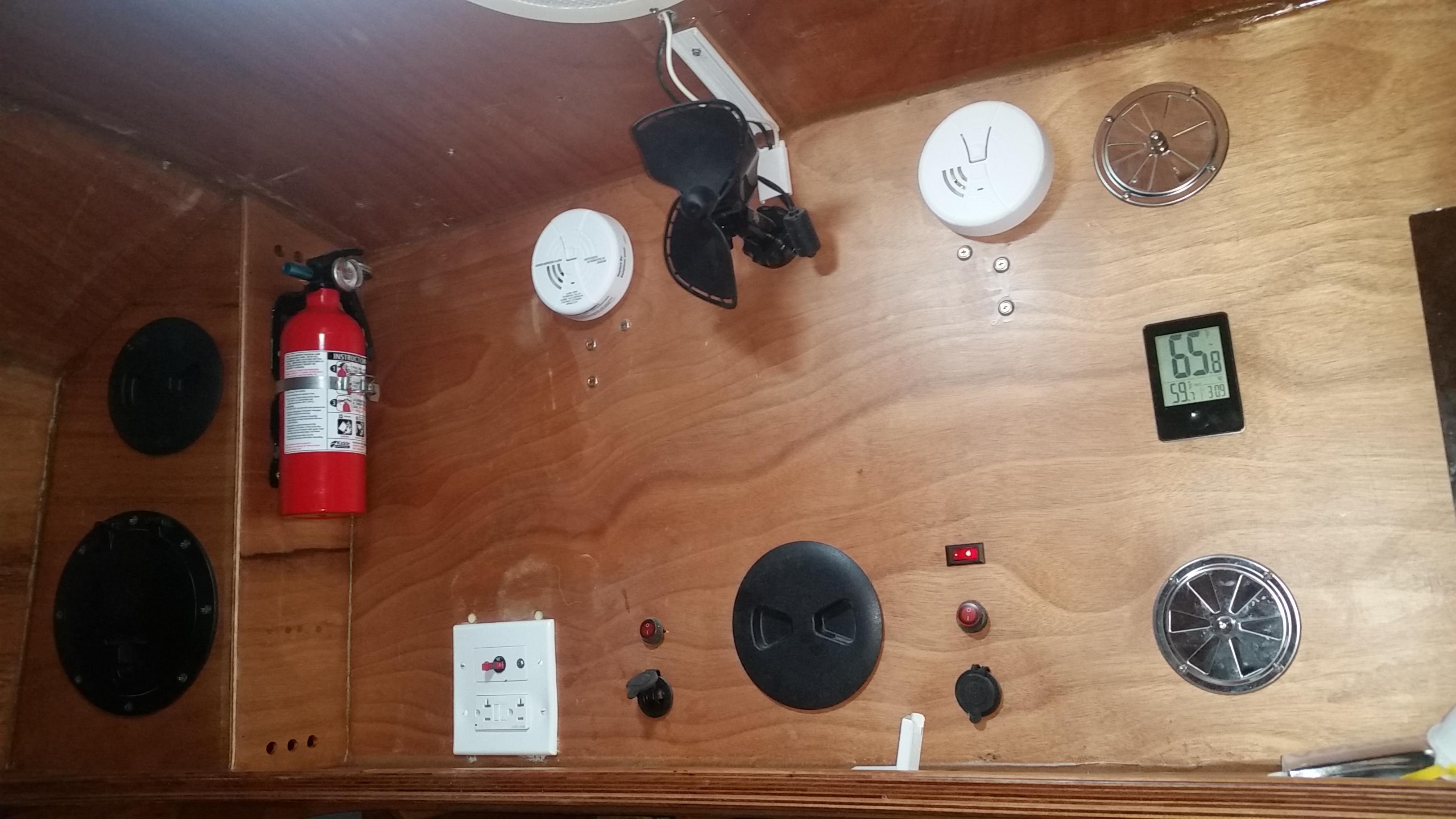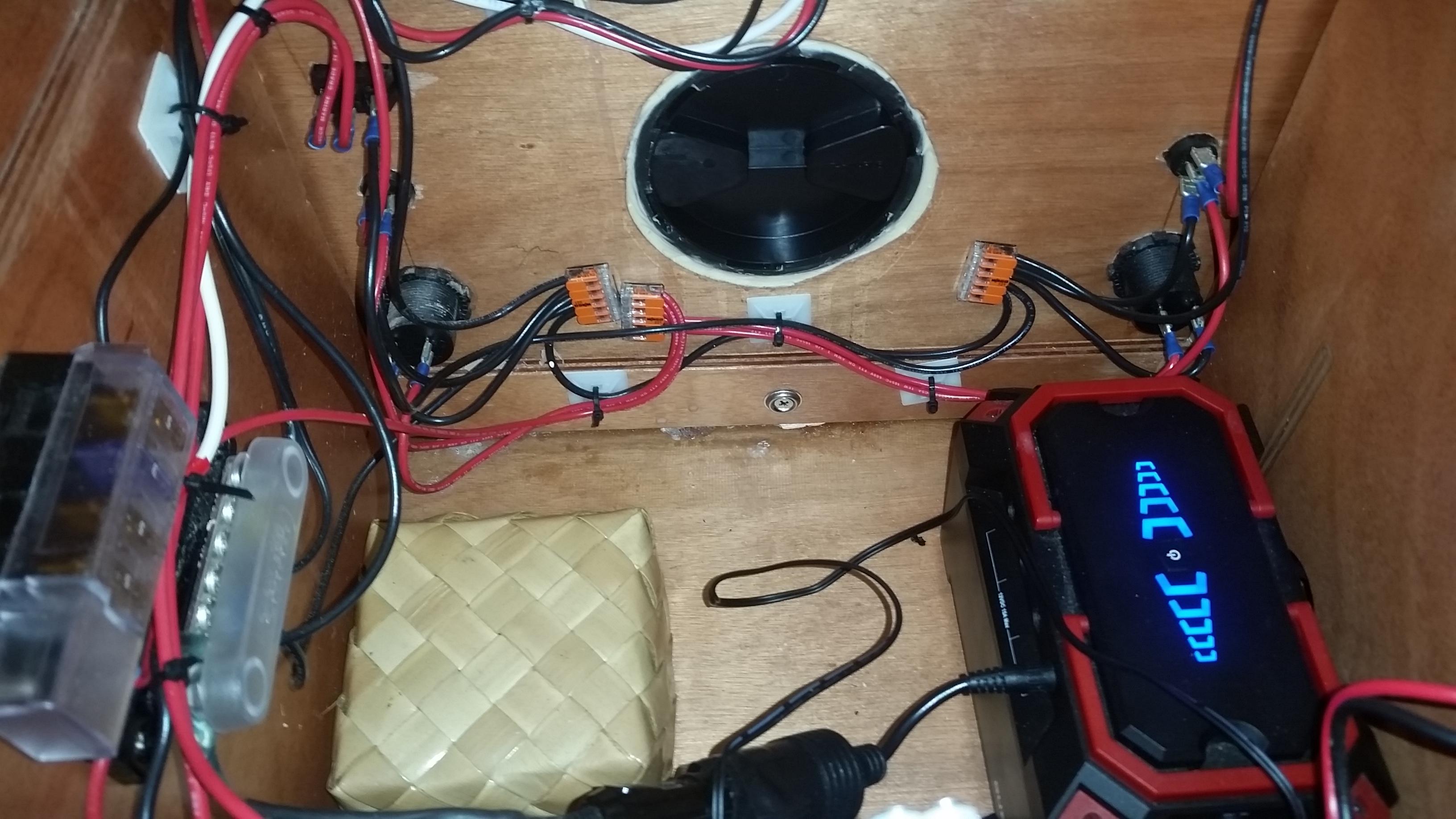Welcome to TeardropForum.com › Forums › Teardrop Builders’ Forum › Electrical systems
- This topic has 5 replies, 5 voices, and was last updated 5 years, 6 months ago by
western_flyer.
-
AuthorPosts
-
December 31, 2018 at 8:18 pm #2367
Grandpa Tucson
ParticipantI’ve watched the Waterlust video once, and it appears the electrical system they used is not what CLC sells. Should I study their setup more or is CLC’s just fine. Electrical is a weak point for me.
January 2, 2019 at 11:36 am #2369mpilone
ParticipantI didn’t really follow the CLC electrical system at all. I have details of my system here: http://teardropforum.com/forums/topic/my-electrical-system/
For the most part it was pretty straight forward. The only tricky part was the 3-way switches I put in for control of the lights from either side of the cabin but it definitely isn’t necessary.
-mike
January 3, 2019 at 5:06 pm #2372CWStevens
ParticipantThe Waterlust electrical system was clearly designed to support boon-docking (camping for extended periods away from conventional charging hook-ups.)
As an electrical engineer, I can offer you this advice.
Step 1 – Make a list of your requirements.
What type of camping do you want to do?
Are you going totally rustic? (That’s an option, you know… Battery power lanterns are very cost effective!)
Will you only need lights or fans?
Stereo? TV (if you must)? etc.
Or will you need a heater and be able to charge your laptop while away from civilization for extended periods?Step 2 – How long will you be away from conventional charging options? (If you’re only taking 1 or 2 day trips, you probably won’t need a 100-200W solar charging system.)
Step 3 – Determine the power requirements in order to size the capacity of your power source(s) aka battery.
Step 4 – Determine your budget. A low-AH battery and a simple switch panel is way cheaper than a full-up solar system. Also keep in mind, you can take a phased approach and add things later as your budget allows.
Step 5 – Design your system to meet your requirements.
I wanted the following:
Bulkhead fans, Overhead exhaust fan
Moveable reading lights
Cabin lights (high and low)
Bluetooth stereo
12V power in the galley, and cabin
USB power in the galley (for string lights) (I plan to use a car-charger in the cabin for phone charging.)
A digital panel for V and mA usage (I can’t see using a full-up battery monitor system, at this point.) I splurged with a thermostat.On the back of this panel, I’ve mounted a ground bus-bar, the ammeter shunt, and one additional 12V fused distribution panel (5 fuses).
 January 3, 2019 at 6:07 pm #2373
January 3, 2019 at 6:07 pm #2373CWStevens
Participant<p style=”text-align: left;”>
 </p>January 4, 2019 at 2:30 pm #2379
</p>January 4, 2019 at 2:30 pm #2379ArtisticAdam
ParticipantGrandpa Tucson, I would second what CWStevens said. It’s best to build the electrical to suit your specific needs. Are you looking for a system like Waterlust, or just something to run the roof vent and some LED lights?
January 4, 2019 at 10:27 pm #2382western_flyer
Participant The Waterlust folks are professional film maker with high energy demands. I would think few of us commoners would need anything close to the size and complexity of their electrical system. I’m pretty much on the simple and smallish end of the scale, centered around a 150 watt lithium energy bank, which comes with all the complexity built into the unit. For more power there are 400 watt+ units available.
The Waterlust folks are professional film maker with high energy demands. I would think few of us commoners would need anything close to the size and complexity of their electrical system. I’m pretty much on the simple and smallish end of the scale, centered around a 150 watt lithium energy bank, which comes with all the complexity built into the unit. For more power there are 400 watt+ units available.For shore power, 120 VAC, I have a 20 amp marine circuit breaker and a duplex receptacle with GFIC in the cabin and a second receptacle in the chuck-wagon/galley.
I put in a single 12 VDC LED light overhead in both sections and 12 VDC “porch lights” near the doors. There is a scattering of 12 volt receptacles (cigarette lighter sockets) mostly to run USB devices. And a 12 VDC marine cabin fan hardwired to the distribution bars. I have a tiny 200 watt 120 VAC space heater that will only be used with shore power. EDIT And one additional component a twelve volt overhead exhaust fan.
One book I can recommend on 12 volt wiring is “The 12 Volt Bible for Boats”. My copy is 2003 and is weak on lithium batteries which I find to be much lighter, more powerful pound for pound and longer lasting than the lead acid AGM batteries. I used mostly marine electrical wire. If you’re near a West Marine store I found them very knowledgeable and helpful on 12 volt.
There is no wired sound system. Phones, tablets and perhaps a shortwave radio all connected wirelessly via Bluetooth and hotspot Wi-Fi and charge via USB. I’m far from an electric or electronic guru but some of the manuals electrical suggestions seem somewhat last century.
https://www.amazon.com/Portable-Station-Generator-Flashlights-Emergency/dp/B076PR4TBZ

-
This reply was modified 5 years, 6 months ago by
western_flyer.
-
This reply was modified 5 years, 6 months ago by
western_flyer.
-
This reply was modified 5 years, 6 months ago by
-
AuthorPosts
- You must be logged in to reply to this topic.